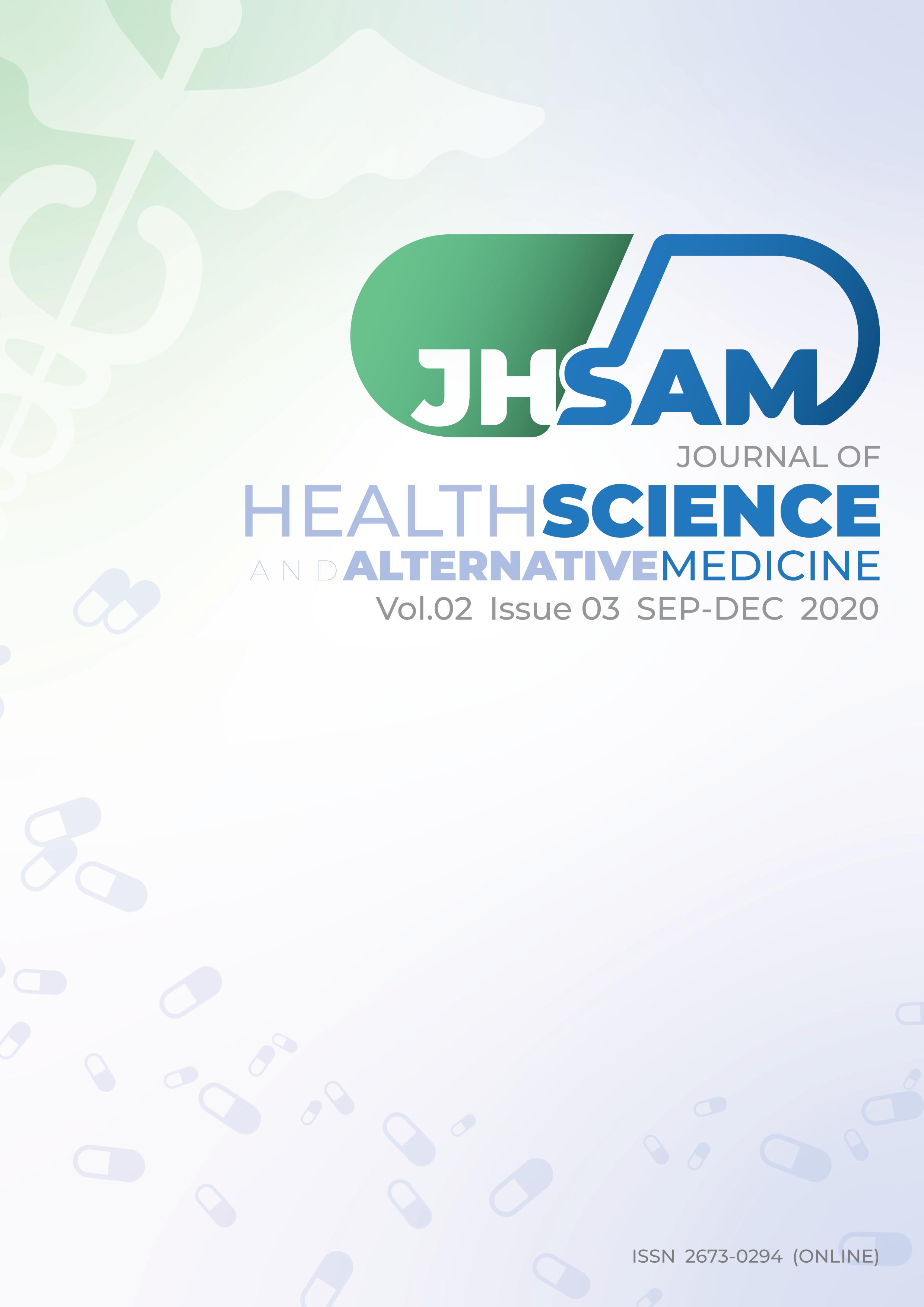Arterial Stiffness and Cardiac Autonomic Function in Severe Obstructive Sleep Apnea Patients without Continuous Positive Airway Pressure
Main Article Content
Abstract
Background: Obstructive sleep apnea (OSA) is the most common sleep-related breathing disorder and contributes to increased morbidity and poor cardiovascular outcomes. It is one of the risk factors for cardiovascular disease.
Objective: This study aimed to determine the associations between sleep apnea parameters and arterial stiffness, cardiac autonomic function, and evaluate changes in arterial stiffness and cardiac autonomic function in patients with severe OSA without continuous positive airway pressure (CPAP) treatment.
Methods: Twenty severe OSA patients without CPAP treatment were recruited for this study. All participants underwent arterial stiffness evaluation by carotid-femoral pulse wave velocity (PWV) using a SphygmoCor device, and cardiac autonomic function by heart rate variability (HRV) measurement using LabChart-7. All participants were measured using these medical instruments at baseline on day 0, day 90, and day 180. Associations between sleep apnea parameters and HRV parameters were observed during the supine and tilt positions. The significance levels were set at a = 0.050 and 0.001, respectively.
Results: There was no significant association between sleep apnea parameters and PWV. HRV showed significant changes at day 90 (p-value < 0.001) and day 180 (p-value < 0.001). PWV increased significantly after day 180 without CPAP treatment.
Conclusions: This study revealed that sleep apnea indices are associated with cardiac autonomic function. OSA patients without CPAP treatment have deteriorated cardiac autonomic function in the supine and tilt positions and increased arterial stiffness after day 180.
Article Details
JHSAM publishes all articles in full open access, meaning unlimited use and reuse of articles with appropriate credit to the authors.
All our articles are published under a Creative Commons "CC-BY-NC-ND 4.0". License which permits use, distribution and reproduction in any medium,
provided that the original work is properly cited and is used for noncommercial purposes.
References
2. Xie X, Pan L, Ren D, Du C, Guo Y. Effects of continuous positive airway pressure therapy on systemic inflammation in obstructive sleep apnea: a meta-analysis. Sleep Med. 2013;14(11):1139-50.
3. Almendros I, Farré R, Planas AM, Torres M, Bonsignore MR, Navajas D, et al. Tissue oxygenation in brain, muscle, and fat in a rat model of sleep apnea: differential effect of obstructive apneas and intermittent hypoxia. Sleep. 2011;34(8):1127-33.
4. Trimer R, Cabidu R, Sampaio LL, Stirbulov R, Poiares D, Guizilini S, et al. Heart rate variability and cardiorespiratory coupling in obstructive sleep apnea: elderly compared with young. Sleep Med. 2014;15(11):1324-31.
5. Vlachopoulos C, Aznaouridis K, Stefanadis C. Prediction of cardiovascular events and all-cause mortality with arterial stiffness: a systematic review and meta-analysis. J Am Coll Cardiol. 2010;55(13):1318-27.
6. Vlachantoni IT, Dikaiakou E, Antonopoulos CN, Stefanadis C, Daskalopoulou SS, Petridou ET. Effects of continuous positive airway pressure (CPAP) treatment for obstructive sleep apnea in arterial stiffness: a meta-analysis. Sleep Med Rev. 2013;17(1):19-28.
7. Jullian-Desayes I, Joyeux-Faure M, Tamisier R, Launois S, Borel AL, Levy P, et al. Impact of obstructive sleep apnea treatment by continuous positive airway pressure on cardiometabolic biomarkers: a systematic review from sham CPAP randomized controlled trials. Sleep Med Rev. 2015;21:23-38.
8. Wuttiumporn K, Khrisanapant W, Boonsawat W, Pasurivong O, Intarapoka B, Reese J. Oxidative Stress and Inflammation after Continuous Positive Airway Pressure Therapy in Patients with Severe Obstructive Sleep Apnea. Sleep and Hypnosis - International Journal. 2018;20:275-82.
9. Hargens TA, Guill SG, Aron A, Zedalis D, Gregg JM, Nickols-Richardson SM, et al. Altered ventilatory responses to exercise testing in young adult men with obstructive sleep apnea. Respir Med. 2009;103(7):1063-9.
10. Kiattisak Chaiprom WS, Orapin Pasurivong, Veerapol Kukongviriyapan, Watchara Boonsawat, Arunrat Srithawong, Jirawat Wattanapanyawech, Upa Kukongviriyapan. Assessment of Central Arterial Stiffness in Healthy Thais by Non-invasive Technique. Srinagarind Med J 2019;34 (5):7.
11. Sopida Santamit WK, Wannapa Ishida, Orapin Pasurivong, Tichanon Promsrisuk,Watchara Boonsawat,Banjamas Intarapoka, Uraiwan Zaeoue. Heart Rate Variability in Thai Patients with Obstructive Sleep Apnea. Srinagarind Med J 2015;30(5):9.
12. Gammoudi N, Ben Cheikh R, Saafi MA, Sakly G, Dogui M. Cardiac autonomic control in the obstructive sleep apnea. Libyan J Med. 2015;10:26989-.
13. Song M-K, Ha JH, Ryu S-H, Yu J, Park D-H. The effect of aging and severity of sleep apnea on heart rate variability indices in obstructive sleep apnea syndrome. Psychiatry Investig. 2012;9(1):65-72.
14. Park D-H, Shin C-J, Hong S-C, Yu J, Ryu S-H, Kim E-J, et al. Correlation between the severity of obstructive sleep apnea and heart rate variability indices. J Korean Med Sci. 2008;23(2):226-31.
15. Perini R, Veicsteinas A. Heart rate variability and autonomic activity at rest and during exercise in various physiological conditions. Eur J Appl Physiol. 2003;90(3-4):317-25.
16. Ziemssen T, Siepmann T. The Investigation of the Cardiovascular and Sudomotor Autonomic Nervous System-A Review. Front Neurol. 2019;10:53-.
17. Shiina K, Tomiyama H, Takata Y, Yoshida M, Kato K, Saruhara H, et al. Effects of CPAP therapy on the sympathovagal balance and arterial stiffness in obstructive sleep apnea. Respir Med. 2010;104(6):911-6.


